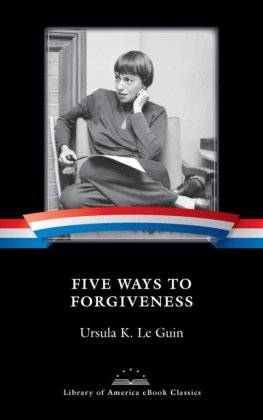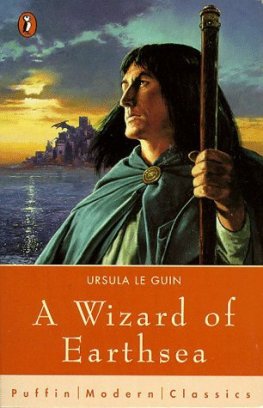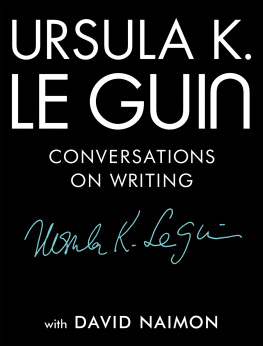Ursula Le Guin - The Tombs of Atuan
Here you can read online Ursula Le Guin - The Tombs of Atuan full text of the book (entire story) in english for free. Download pdf and epub, get meaning, cover and reviews about this ebook. genre: Romance novel. Description of the work, (preface) as well as reviews are available. Best literature library LitArk.com created for fans of good reading and offers a wide selection of genres:
Romance novel
Science fiction
Adventure
Detective
Science
History
Home and family
Prose
Art
Politics
Computer
Non-fiction
Religion
Business
Children
Humor
Choose a favorite category and find really read worthwhile books. Enjoy immersion in the world of imagination, feel the emotions of the characters or learn something new for yourself, make an fascinating discovery.
- Book:The Tombs of Atuan
- Author:
- Genre:
- Rating:3 / 5
- Favourites:Add to favourites
- Your mark:
- 60
- 1
- 2
- 3
- 4
- 5
The Tombs of Atuan: summary, description and annotation
We offer to read an annotation, description, summary or preface (depends on what the author of the book "The Tombs of Atuan" wrote himself). If you haven't found the necessary information about the book — write in the comments, we will try to find it.
The Tombs of Atuan — read online for free the complete book (whole text) full work
Below is the text of the book, divided by pages. System saving the place of the last page read, allows you to conveniently read the book "The Tombs of Atuan" online for free, without having to search again every time where you left off. Put a bookmark, and you can go to the page where you finished reading at any time.
Font size:
Interval:
Bookmark:
Ursula K. LeGuin
The Tombs of Atuan
Prologue
Come home, Tenar! Come home!
In the deep valley, in the twilight, the apple trees were on the eve of blossoming; here and there among the shadowed boughs one flower had opened early, rose and white, like a faint star. Down the orchard aisles, in the thick, new, wet grass, the little girl ran for the joy of running; hearing the call she did not come at once, but made a long circle before she turned her face towards home. The mother waiting in the doorway of the hut, with the firelight behind her, watched the tiny figure running and bobbing like a bit of thistledown blown over the darkening grass beneath the trees.
By the corner of the hut, scraping clean an earthclotted hoe, the father said, Why do you let your heart hang on the child? They're coming to take her away next month. For good. Might as well bury her and be done with it. What's the good of clinging to one you're bound to lose? She's no good to us. If they'd pay for her when they took her, that would be something, but they won't. They'll take her and that's an end of it.
The mother said nothing, watching the child who had stopped to look up through the trees. Over the high hills, above the orchards, the evening star shone piercing clear.
She isn't ours, she never was since they came here and said she must be the Priestess at the Tombs. Why can't you see that? The man's voice was harsh with complaint and bitterness. You have four others. They'll stay here, and this one won't. So, don't set your heart on her. Let her go!
When the time comes, the woman said, I will let her go. She bent to meet the child who came running on little, bare, white feet across the muddy ground, and gathered her up in her arms. As she turned to enter the hut she bent her head to kiss the child's hair, which was black; but her own hair, in the flicker of firelight from the hearth, was fair.
The man stood outside, his own feet bare and cold on the ground, the clear sky of spring darkening above him. His face in the dusk was full of grief, a dull, heavy, angry grief that he would never find the words to say. At last he shrugged, and followed his wife into the firelit room that rang with children's voices.
The Eaten One
One high horn shrilled and ceased. The silence that followed was shaken only by the sound of many footsteps keeping time with a drum struck softly at a slow heartpace. Through cracks in the roof of the Hall of the Throne, gaps between columns where a whole section of masonry and tile had collapsed, unsteady sunlight shone aslant. It was an hour after sunrise. The air was still and cold. Dead leaves of weeds that had forced up between marble pavement-tiles were outlined with frost, and crackled, catching on the long black robes of the priestesses.
They came, four by four, down the vast hall between double rows of columns. The drum beat dully. No voice spoke, no eye watched. Torches carried by black-clad girls burned reddish in the shafts of sunlight, brighter in the dusk between. Outside, on the steps of the Hall of the Throne, the men stood, guards, trumpeters, drummers; within the great doors only women had come, dark-robed and hooded, walking slowly four by four towards the empty throne.
Two came, tall women looming in their black, one of them thin and rigid, the other heavy, swaying with the planting of her feet. Between these two walked a child of about six. She wore a straight white shift. Her head and arms and legs were bare, and she was barefoot. She looked extremely small. At the foot of the steps leading up to the throne, where the others now waited in dark rows, the two tall women halted. They pushed the child forward a little.
The throne on its high platform seemed to be curtained on each side with great webs of blackness dropping from the gloom of the roof; whether these were curtains, or only denser shadows, the eye could not make certain. The throne itself was black, with a dull glimmer of precious stones or gold on the arms and back, and it was huge. A man sitting in it would have been dwarfed; it was not of human dimensions. It was empty. Nothing sat in it but shadows.
Alone, the child climbed up four of the seven steps of red-veined marble. They were so broad and high that she had to get both feet onto one step before attempting the next. On the middle step, directly in front of the throne, stood a large, rough block of wood, hollowed out on top. The child knelt on both knees and fitted her head into the hollow, turning it a little sideways. She knelt there without moving.
A figure in a belted gown of white wool stepped suddenly out of the shadows at the right of the throne and strode down the steps to the child. His face was masked with white. He held a sword of polished steel five feet long. Without word or hesitation he swung the sword, held in both hands, up over the little girl's neck. The drum stopped beating.
As the blade swung to its highest point and poised, a figure in black darted out from the left side of the throne, leapt down the stairs, and stayed the sacrificer's arms with slenderer arms. The sharp edge of the sword glittered in mid-air. So they balanced for a moment, the white figure and the black, both faceless, dancer-like above the motionless child whose white neck was bared by the parting of her black hair.
In silence each leapt aside and up the stairs again, vanishing in the darkness behind the enormous throne. A priestess came forward and poured out a bowl of some liquid on the steps beside the kneeling child. The stain looked black in the dimness of the hall.
The child got up and descended the four stairs laboriously. When she stood at the bottom, the two tall priestesses put on her a black robe and hood and mantle, and turned her around again to face the steps, the dark stain, the throne.
O let the Nameless Ones behold the girl given to them, who is verily the one born ever nameless. Let them accept her life and the years of her life until her death, which is also theirs. Let them find her acceptable. Let her be eaten!
Other voices, shrill and harsh as trumpets, replied: She is eaten! She is eaten!
The little girl stood looking from under her black cowl up at the throne. The jewels inset in the huge clawed arms and the back were glazed with dust, and on the carven back were cobwebs and whitish stains of owl droppings. The three highest steps directly before the throne, above the step on which she had knelt, had never been climbed by mortal feet. They were so thick with dust that they looked like one slant of gray soil, the planes of the red-veined marble wholly hidden by the unstirred, untrodden siftings of how many years, how many centuries.
She is eaten! She is eaten!
Now the drum, abrupt, began to sound again, beating a quicker pace.
Silent and shuffling, the procession formed and moved away from the throne, eastward towards the bright, distant square of the doorway. On either side, the thick double columns, like the calves of immense pale legs, went up to the dusk under the ceiling. Among the priestesses, and now all in black like them, the child walked, her small bare feet treading solemnly over the frozen weeds, the icy stones. When sunlight slanting through the ruined roof flashed across her way, she did not look up.
Guards held the great doors wide. The black procession came out into the thin, cold light and wind of early morning. The sun dazzled, swimming above the eastern vastness. Westward, the mountains caught its yellow light, as did the facade of the Hall of the Throne. The other buildings, lower on the hill, still lay in purplish shadow, except for the Temple of the God-Brothers across the way on a little knoll: its roof, newly gilt, flashed the day back in glory. The black line of priestesses, four by four, wound down the Hill of the Tombs, and as they went they began softly to chant. The tune was on three notes only, and the word that was repeated over and over was a word so old it had lost its meaning, like a signpost still standing when the road is gone. Over and over they chanted the empty word. All that day of the Remaking of the Priestess was filled with the low chanting of women's voices, a dry unceasing drone.
Font size:
Interval:
Bookmark:
Similar books «The Tombs of Atuan»
Look at similar books to The Tombs of Atuan. We have selected literature similar in name and meaning in the hope of providing readers with more options to find new, interesting, not yet read works.
Discussion, reviews of the book The Tombs of Atuan and just readers' own opinions. Leave your comments, write what you think about the work, its meaning or the main characters. Specify what exactly you liked and what you didn't like, and why you think so.

















